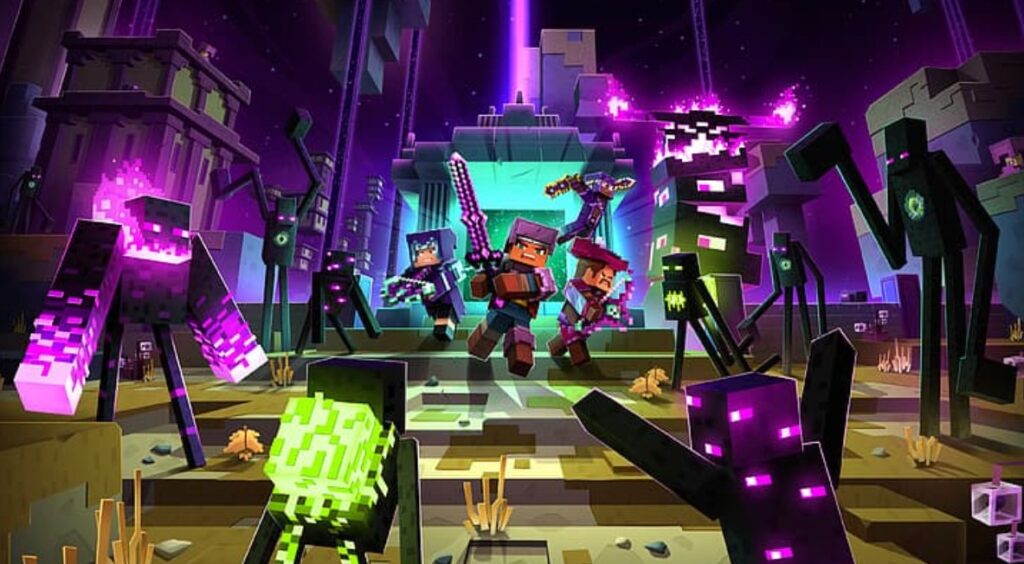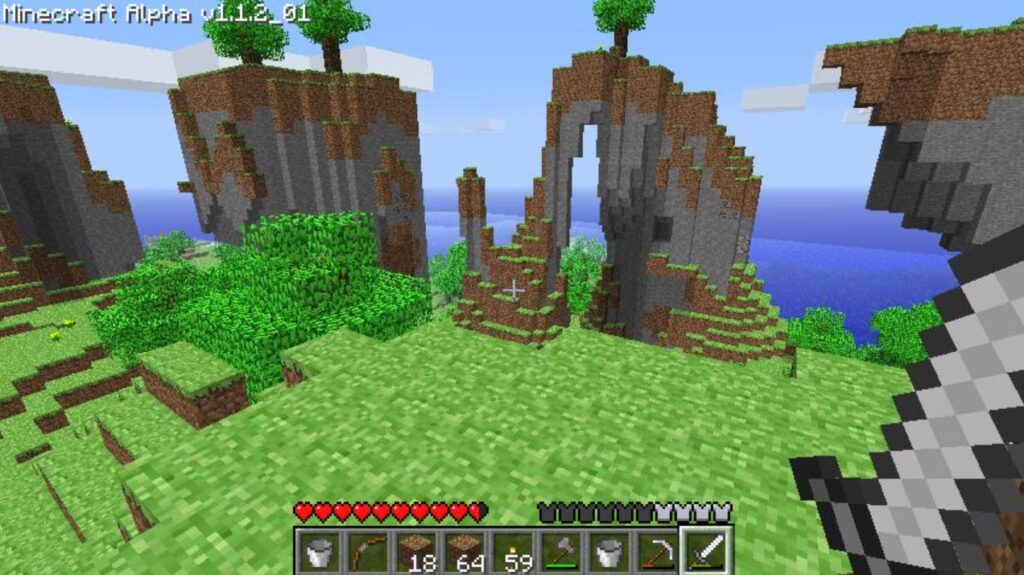Minecraft, the iconic sandbox game released in 2009, has become a cultural phenomenon, captivating millions of players worldwide. One of the most beloved aspects of the game is its unique visual style, characterized by pixelated graphics and distinctive game icons and banners. These elements have not only become synonymous with the game itself but also serve as a nostalgic reminder for retro gamers. In this article, we delve into the fascinating world of Minecraft (2009) game icons and banners, exploring their history, significance, and enduring appeal.
The Birth of Minecraft and Its Iconic Visuals
Minecraft, created by Markus “Notch” Persson, was officially released on May 17, 2009. The game introduced players to a blocky, procedurally generated world where creativity and survival instincts were paramount. The pixelated graphics, reminiscent of early computer games, played a significant role in its charm and accessibility. The simplicity of the design allowed for endless possibilities, as players could build, explore, and interact with the environment in ways that were both intuitive and visually appealing.

The Significance of Game Icons and Banners
Game icons and banners are integral to the Minecraft experience, serving as symbols of achievement, identity, and community. In Minecraft, icons often represent items, tools, and blocks that players encounter and utilize throughout their journey. These icons are meticulously designed to be instantly recognizable, making it easy for players to identify and manage their inventory. From the humble wooden pickaxe to the elusive diamond, each icon holds a special place in the hearts of Minecraft enthusiasts.
Banners, on the other hand, offer a canvas for personalization and creativity. Introduced in the 1.8 update, banners can be crafted and customized using a variety of patterns and colors. Players use banners to decorate their structures, create unique flags, and even design intricate art pieces. The ability to create and display banners adds another layer of depth to the game, allowing players to express their individuality and mark their territory in the vast Minecraft world.
Evolution of Minecraft Icons and Banners
Since its release, Minecraft has undergone numerous updates and expansions, each bringing new elements and enhancements to the game. The evolution of game icons and banners reflects this continuous development. Early versions of Minecraft featured simple, rudimentary icons that served basic functions. As the game grew in popularity and complexity, so did the design and variety of icons and banners.

The introduction of new materials, tools, and creatures necessitated the creation of corresponding icons. For example, the addition of enchanted items required unique icons to represent their magical properties. Similarly, the inclusion of various biomes and environments inspired new banner patterns and designs, allowing players to tailor their creations to match their surroundings.
Customizing Your Minecraft Experience
One of the most appealing aspects of Minecraft is the ability to customize your gameplay experience. Game icons and banners play a crucial role in this personalization. Players can create resource packs that modify the appearance of icons, giving them a fresh look or a nostalgic twist. Whether it’s a throwback to the game’s early days or a modern reinterpretation, these customizations allow players to put their unique stamp on the game.
Additionally, the Minecraft community has created an extensive library of user-generated content, including custom icons and banners. Websites and forums dedicated to Minecraft offer countless resources for players looking to enhance their game. From medieval-themed icons to futuristic banners, the possibilities are endless. This vibrant community ensures that Minecraft remains a dynamic and ever-evolving game, driven by the creativity and passion of its players.
The Cultural Impact of Minecraft Icons and Banners
The influence of Minecraft extends beyond the game itself, permeating popular culture and inspiring countless fan creations. Game icons and banners, in particular, have become iconic symbols that are instantly recognizable to gamers and non-gamers alike. The simplicity and versatility of these designs make them perfect for merchandise, artwork, and even memes.
Minecraft’s impact on education is another testament to the significance of its visual elements. Many educators use Minecraft as a teaching tool, leveraging its engaging graphics and interactive nature to teach subjects such as mathematics, history, and coding. The game’s icons and banners serve as familiar touchpoints for students, making learning more accessible and enjoyable.
Preserving the Legacy of Minecraft (2009)
As Minecraft continues to evolve, it’s essential to preserve the legacy of its original 2009 version. The game icons and banners from this era hold a special place in the hearts of long-time players, representing the simplicity and innovation that defined the early days of Minecraft. By maintaining and celebrating these elements, we honor the game’s roots while embracing its future.

The preservation of Minecraft’s history is also evident in the numerous fan projects and archives dedicated to the game. Websites and online communities have documented every update, change, and addition to Minecraft, ensuring that future generations can appreciate its evolution. These efforts highlight the enduring appeal of Minecraft (2009) game icons and banners and their significance in gaming history.
The Future of Minecraft Icons and Banners
Looking ahead, the future of Minecraft icons and banners is bright and full of potential. As the game continues to receive updates and new content, we can expect to see even more innovative and creative designs. The introduction of new game modes, features, and themes will undoubtedly inspire fresh iconography and banner patterns.
Moreover, the rise of virtual and augmented reality technologies opens up exciting possibilities for Minecraft. Imagine experiencing the game’s iconic visuals in immersive environments, where game icons and banners come to life in new and unexpected ways. This blending of classic and cutting-edge technology ensures that Minecraft will remain a beloved and relevant game for years to come.
Conclusion
Minecraft (2009) game icons and banners are more than just visual elements; they are symbols of creativity, community, and nostalgia. From their humble beginnings to their current status as cultural icons, these designs have played a pivotal role in the game’s success and enduring appeal. As we look back on the legacy of Minecraft and forward to its future, one thing is certain: the magic of its game icons and banners will continue to captivate and inspire players around the world. Whether you’re a seasoned veteran or a newcomer to the game, there’s always something new to discover and create in the ever-expanding world of Minecraft.

